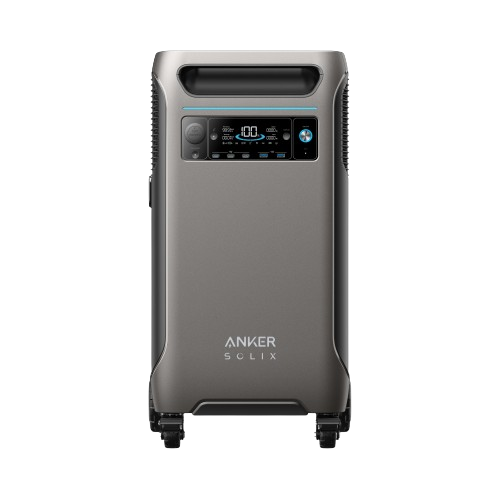
Portable Power Stations: Can They Run Your TV, AC, and Fridge?
Have you ever worried about power while you are not within the comfort of your house? The ability to stay in charge and connected to electricity is one of the most critical things to have during outages and when no outlets are available. Even if you don't use one on a regular basis, it's still a wise investment that you'll be grateful for when you are in a pinch.
Fortunately, being off-grid doesn't mean you have to follow the wildlife. Many pieces of equipment, including key home appliances, can be used during outages if you have access to a portable power station. With power connectivity, numerous gears and gadgets can be used without concern. Continue reading to know what appliances can portable power station run.

How to Know If Your Portable Power Station Can Power an Appliance?
It goes without saying that the kind of appliances a portable power station can run is determined by its storage capacity and output, as well as the wattage of appliances you wish to run at the same time. Smaller items, phones, fans, and tablets for example, can be charged by most portable power stations. Remember to make sure to check if the portable power station that you're going to buy can run more power-consuming devices.
Extra watts should be added to your portable power station capacity to make room for the appliance's surge power or startup current. Normally, a machine's operational capacity, such as an AC, is usually always less than the surge capacity required to switch it on. When these appliances are first turned on, the surge power consumes twice, or even three times, the typical power. However, once they’re in normal operation, the device will use standard power and consume the same amount of electricity continuously.
Read below for a quick list of what appliances a portable power station can run when you are outdoors.
Is It Possible to Power a TV with a Portable Power Station?
Yes, it is possible to use a portable power station to power your television. Typically, most PPSs can run small electronics such as radios, CD players, laptop computers, LED lights, and even TVs. Most televisions do not require many watts, especially LED TV, which consumes very little power per hour. In fact, current televisions consume 100 watts/hour on average, ranging from 50-200 watts/hour. A 100 watt consumption is not excessive.

Additionally, make sure to purchase a power station that can power a TV and other equipment as you may need to run multiple appliances simultaneously. If you wish to power other devices alongside the TV, the battery runtime will vary. For instance, if you wish to stream internet content or use a player while watching TV, you must consider the needed wattage for the connected devices. When you charge various appliances or devices, it influences the total amount of energy you consume. and how long your power station will last between charges.
Is It Possible to Run Your AC Unit on a Portable Power Station?
Actually, this is determined by the power station and air conditioner you wish to pair. Check the power station's inverter rating, then how many watts the air conditioner requires. Because each AC is unique, the easiest way to determine starting and running watts is to consult the handbook, specifications, or contact the company directly. Here is a short list of AC power requirements for reference:
- A typical central AC unit consumes between 3000 and 3500 watts/hour.
- Window units require between 900 and 1,400 watts/hour,
- Whereas larger portable units consume between 2,900 and 4,100 watts/hour.
If you wish to power an RV air conditioning system, you may require up to 3,600 watts to start the unit and 500 to 1,800 watts/hour to keep it running.
Is It Possible to Power a Refrigerator Using a Portable Power Station?
Yes, for the most part. Before using a portable power station to run a refrigerator, various aspects must be considered, including the size and wattage rating of the refrigerator, as well as the capacity of the portable power station itself. The size of the refrigerator is the most significant consideration. A large refrigerator consumes a lot of energy and may be unable to be powered by a tiny, portable power station. A compact refrigerator, on the other hand, can be easily powered by a small and portable power station.
The energy used by a refrigerator varies based on the compressor and the system to which it is attached. A standard refrigerator consumes 1-2 kWh/day. The majority of electricity is consumed during startup and when the compressor is operating.
Look at the rating figures to establish your refrigerator's daily energy usage, and ensure that your power station has sufficient capacity to handle it. It can continue to deliver power to the refrigerator as long as the peak power of your mobile power station is larger than the starting power of the refrigerator and the output power of the power station is greater than the continuous power of the refrigerator.

Final Thoughts
To conclude, battery backup are a great solution when you are worried about powering devices in remote or off-grid locations. Now we have covered this quick guide of what appliances can portable power station run. When buying a portable power station, be sure to consider its size, wattage rating, and battery capacity. Get a portable power station with a high battery capacity and wattage rating.
All of those are packed nicely in the Anker SOLIX F3800. This dependable power station can run even the more-consuming appliances. Now, you'll be able to keep your TV, AC or refrigerator running even if you don't have access to standard power sources.














